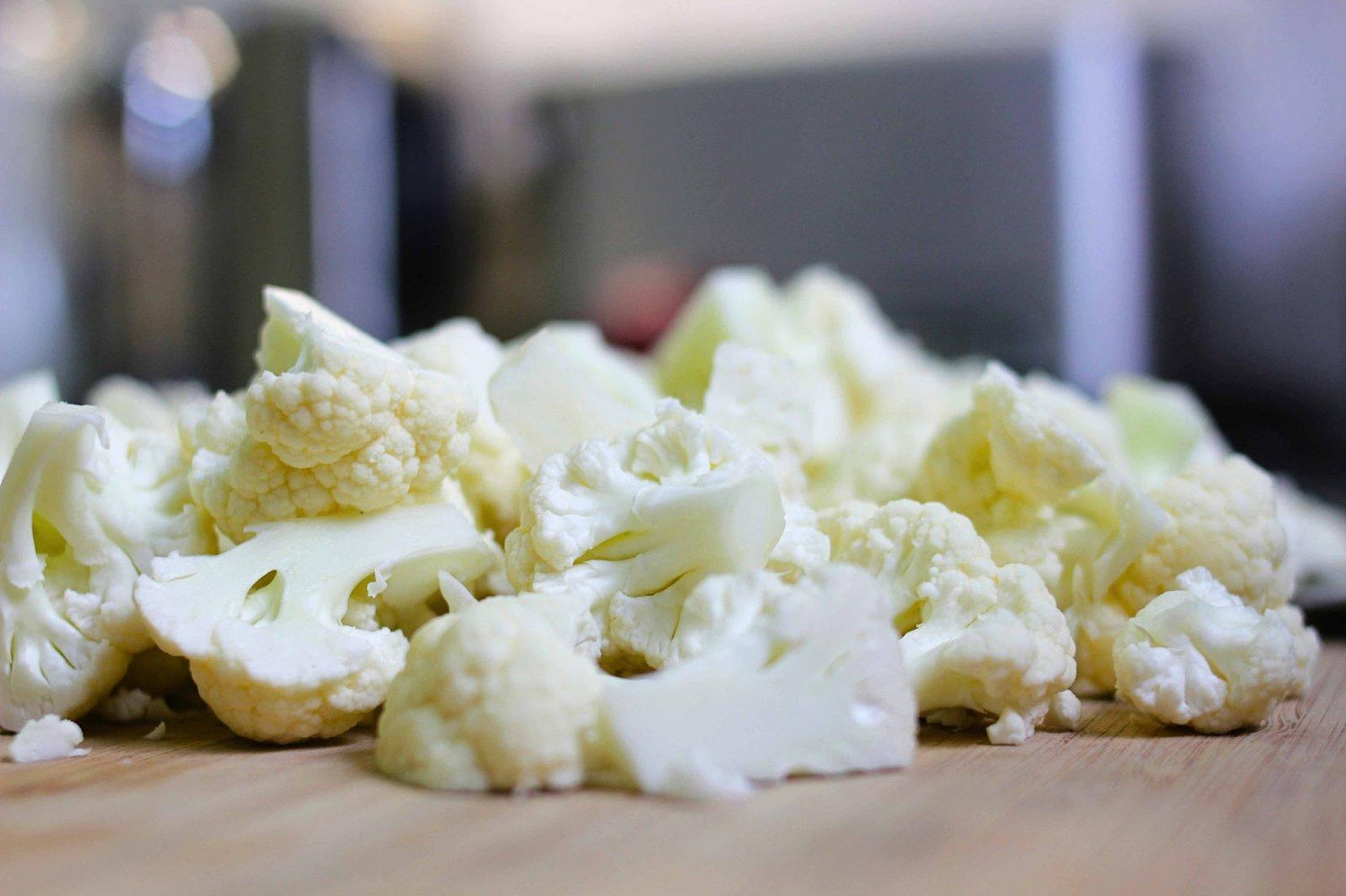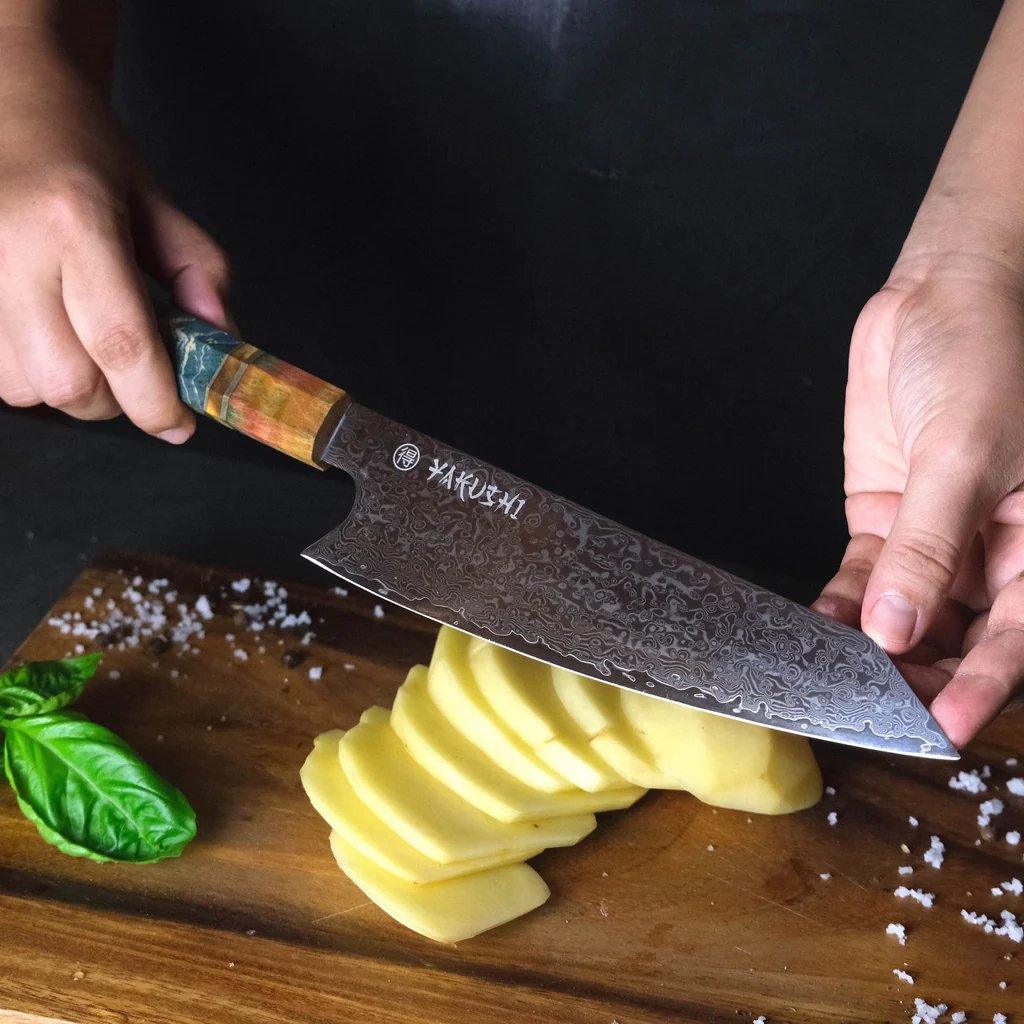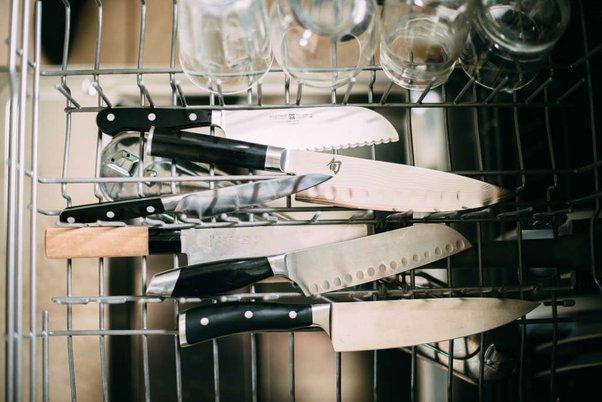Mastering the Art of Cauliflower Cutting:
Knife Selection and Techniques

Importance of Knife Selection
-
Efficiency and Speed: A sharp, well-suited knife allows for clean cuts and can make the task of cutting vegetables like cauliflower faster and more efficient. Santoku and Utility knives are great for making quick and precise cuts.
-
Control and Precision: Certain knives, such as a chef's knife like the Damascus Chef knife or a paring knife, offer better control and precision, which is essential when dealing with the intricate florets of cauliflower. This precision helps in achieving uniform pieces that cook evenly.
-
Safety: A dull or inappropriate knife can slip easily, increasing the risk of injury. That is why you must make sure your knife is sharp enough, providing a better grip and control and reducing the likelihood of accidents. For cutting through harder exteriors and softer interiors, like some fruits or certain parts of cauliflower, a serrated knife can prevent slipping and ensure safer cutting.
-
Quality of Cuts: For the right presentation and texture, you must use a knife that allows clean cuts. Ragged or uneven cuts can affect the appearance and potentially the cooking process, as uneven pieces might cook at different rates.
- Ease of Use: Using a knife that is designed for the task makes the process less tiring. For instance, a chef's knife with a comfortable handle and a broad blade allows for a rocking motion that is efficient for chopping larger vegetables like cauliflower.
Cutting Techniques for Cauliflower

- Wash and break the cauliflower into florets, smaller or bigger, according to your requirements.
- Hold the floret steady with your non-dominant hand, using a claw grip (curl your fingers in towards your palm with your thumb on the back).
Chopping
Dicing
Mincing
Slicing
- Cut the cauliflower head in half through the stem.
- Place each half face down on the cutting board.
- Starting from the root end, hold the knife parallel to the cutting board and carefully slice it down to create thin slabs.




Leave a comment
This site is protected by hCaptcha and the hCaptcha Privacy Policy and Terms of Service apply.